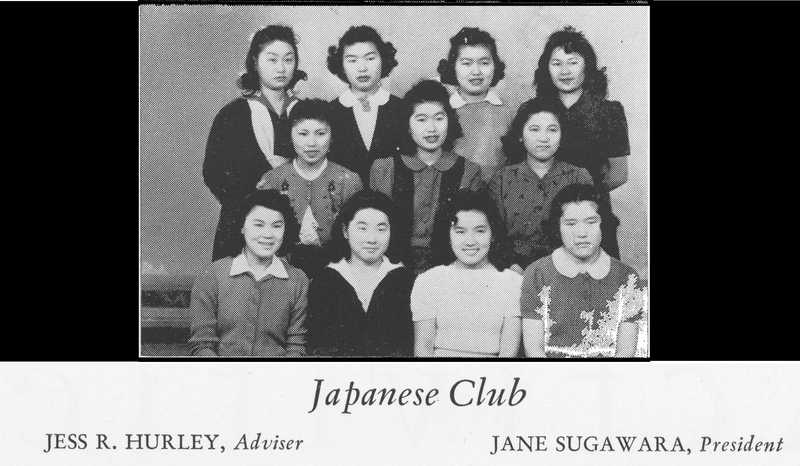March 12, 2020
On February 27, 1942, the Seattle School Board accepted the forced resignations of 27 Nisei women working as clerks for the school district. Four decades later, those women fought for, and won, a resolution to apologize and compensate them for their wartime dismissal. It was a small but powerful early victory for the Japanese American redress movement — and an indication of more to come.
At the start of the 1941-1942 school year, Japanese Americans held over one-fourth of the clerical positions within Seattle area schools — all of them former students of the district. But within a few weeks of the attack on Pearl Harbor, a group of white mothers at Gatewood Elementary, led by Esther Sekor, submitted a formal complaint to the school district demanding they be removed “for the security of our children.” When the initial complaint didn’t work, the mothers escalated. On February 22, they organized a demonstration in front of their children’s school and collected some 250 signatures from like-minded racists. They threatened to bring the petition to the state governor and the FBI, and to withdraw their children from school.
The Seattle School District caved.
Toyo Okuda, one of the 27 clerks, recalled being summoned to the superintendent’s office, where she was told that she and the other “girls” were a detriment to the school district, and warned that they would be fired if they did not resign.
But the superintendent and the mob of angry white mothers were not the only source of pressure. In response to growing publicity, James Sakamoto, a founder of the Japanese American Citizens League and publisher of the Japanese American Courier, called the women to a meeting at the Courier office the next day to discuss their options. When they arrived, he instead urged them to sign a resignation letter he had written for them.
Sakamoto told the women that resigning was the “honorable” thing to do. As good citizens and good Japanese Americans — and, implicitly, good “girls” — it was their duty to “prove [their] loyalty to the school system and the United States by not becoming a contributing factor to dissension and disunity,” as the letter he ghost wrote for them stated.
Feeling they had no other options, the women gave in to the mounting pressure and signed Sakamoto’s letter. “We were coerced into signing,” Ai Takizawa Koshi later said. “We were young, immature, and bewildered and thought that there was no other alternative.”
1,000 University of Washington students signed a petition urging the district to reject the mass resignation and allow the women to continue working. They criticized the racist campaign against the Nisei clerks, calling the mothers’ actions “undemocratic, intolerant, disrespectful of the rights of American citizens, and detrimental to the best interests of the community.” But in the end, the Seattle School Board chose the easier route and accepted the resignations.

Alice Kawanishi described the painful irony of the experience, and the sense of betrayal considering all 27 women were alumni of the Seattle school district: “the very school system which taught us about democracy, liberty, and justice for all, failed to support the Americans of Japanese ancestry against the mass deprivation of rights of citizens.”
More than forty years later, as the fight for reparations for the wartime incarceration of Japanese Americans was gaining momentum, Cherry Kinoshita and Mako Nakagawa reached out to the women and encouraged them to tell their story. Kinoshita was heavily involved in lobbying for redress on a local and national level. Nakagawa was an elementary school principal within the Seattle school district and then-president of the Seattle JACL. After meeting with the women still living in the Seattle area to gain their support, Kinoshita and Nakagawa spearheaded a campaign to demand redress for the former clerks.
Their fight was part of a larger effort to seek redress for Japanese Americans fired by various government entities during WWII. California had already passed legislation awarding fired state workers $5,000 in reparations in 1982. This Washington campaign was one of several cases that followed, adding fuel to the growing Redress Movement.
On April 11, 1984, Seattle School Board member T.J. Vassar presented a resolution to compensate the Nisei clerks for their unjust dismissal during WWII. Thanks to the emotional testimony of the women themselves and support from the broader community — and in spite of opposition and outright heckling from incarceration apologists who claimed the women had nothing to complain about — the resolution narrowly passed two weeks later, with 4 votes in favor, 2 against, and 1 abstention.

It took another two years of lobbying and legal wrangling to secure the payments, as the Seattle School Board required state legislation in order to recognize a “moral obligation” for paying reparations. After passing through the Washington State House of Representatives and Senate in early spring of 1986, a state bill authorizing payments to the surviving women was finally signed into law by Governor Booth Gardner on April 2, 1986.
—
By Densho Communications Coordinator Nina Wallace
For more information:
Robert Sadamu Shimabukuro, Born in Seattle: The Campaign for Japanese American Redress (Seattle: University of Washington Press, 2011), 90-100.
Louis Fiset, Camp Harmony: Seattle’s Japanese Americans and the Puyallup Assembly Center (University of Illinois Press, 2009), 43-45.
[Header photo: Former school district employees and supporters of the redress resolution, on April 25, 1984. Front (top to bottom): Alice Kawanishi; Mako Nakagawa, past president of the JACL; and Cherry Kinoshita, co-chair for the Seattle redress committee. Back: Ai Koshi; T. J. Vassar, Seattle School Board member; May Namba; and Toyo Cary. Photo courtesy of the Kinoshita Family Collection.]

